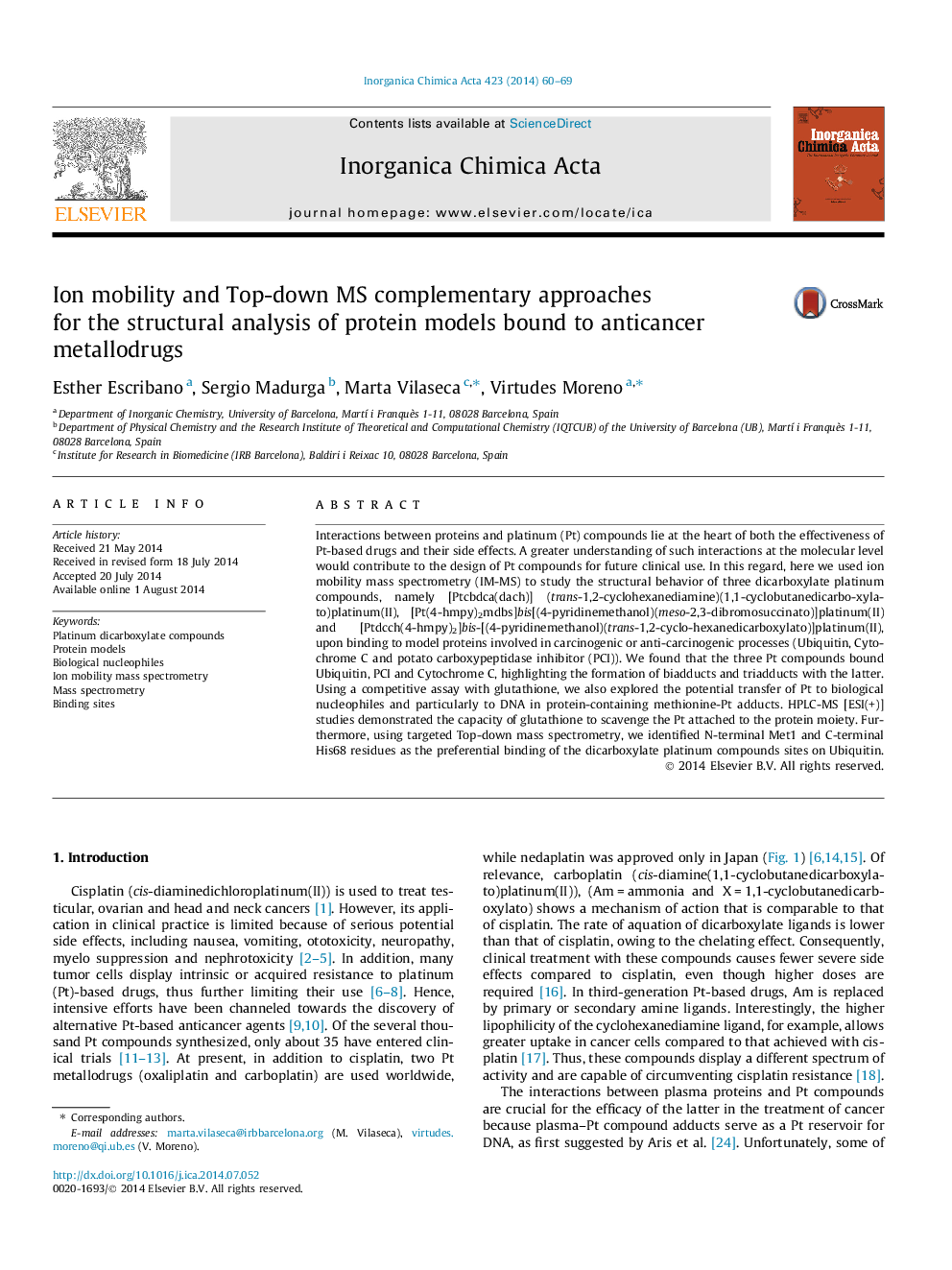| کد مقاله | کد نشریه | سال انتشار | مقاله انگلیسی | نسخه تمام متن |
|---|---|---|---|---|
| 1309343 | 975204 | 2014 | 10 صفحه PDF | دانلود رایگان |
• IM-MS structural analysis of three platinum compounds bound to model proteins: MS detection of biadducts and triadducts.
• Glutathione kidnaps platinum moieties from proteins.
• Top-down mass spectrometry identifies preferential binding sites on Ubiquitin.
Interactions between proteins and platinum (Pt) compounds lie at the heart of both the effectiveness of Pt-based drugs and their side effects. A greater understanding of such interactions at the molecular level would contribute to the design of Pt compounds for future clinical use. In this regard, here we used ion mobility mass spectrometry (IM-MS) to study the structural behavior of three dicarboxylate platinum compounds, namely [Ptcbdca(dach)] (trans-1,2-cyclohexanediamine)(1,1-cyclobutanedicarbo-xylato)platinum(II), [Pt(4-hmpy)2mdbs]bis[(4-pyridinemethanol)(meso-2,3-dibromosuccinato)]platinum(II) and [Ptdcch(4-hmpy)2]bis-[(4-pyridinemethanol)(trans-1,2-cyclo-hexanedicarboxylato)]platinum(II), upon binding to model proteins involved in carcinogenic or anti-carcinogenic processes (Ubiquitin, Cytochrome C and potato carboxypeptidase inhibitor (PCI)). We found that the three Pt compounds bound Ubiquitin, PCI and Cytochrome C, highlighting the formation of biadducts and triadducts with the latter. Using a competitive assay with glutathione, we also explored the potential transfer of Pt to biological nucleophiles and particularly to DNA in protein-containing methionine-Pt adducts. HPLC-MS [ESI(+)] studies demonstrated the capacity of glutathione to scavenge the Pt attached to the protein moiety. Furthermore, using targeted Top-down mass spectrometry, we identified N-terminal Met1 and C-terminal His68 residues as the preferential binding of the dicarboxylate platinum compounds sites on Ubiquitin.
Three Pt compounds bound Ubiquitin, PCI and Cytochrome C, highlighting the formation of biadducts and triadducts with the latter.Using a competitive assay with glutathione, we also explored the potential transfer of Pt to biological nucleophiles and particularly to DNA in protein-containing methionine-Pt adducts.HPLC-MS [ESI(+)] studies demonstrated the capacity of glutathione to scavenge the Pt attached to the protein moiety.Figure optionsDownload as PowerPoint slide
Journal: Inorganica Chimica Acta - Volume 423, Part B, 1 November 2014, Pages 60–69
